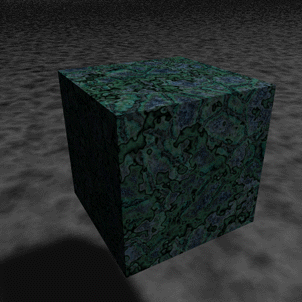- Lesson One: The Number One
- ... in Geometry
- ... in Nature
- ... in Culture
- "Uroboros" (related artwork by the author)
- "Creation" (related artwork by the author)
- Lesson Two: The Square Root of Two
- ... in Geometry
- ... in Nature, Part 1
- ... in Nature, Part 2
- ... in Culture, Part 1
- ... in Culture, Part 2
- "Duality" (related artwork by the author)
- Lesson Three: The Square Root of Three
- ... in Geometry
- ... in Nature
- ... in Culture
- "Vesica" (related artwork by the author)
- Lesson Four: Phi, or the Golden Proportion
- ... Intro, Part 2
- ... Intro, Part 3
- ... in Geometry
- ... in Nature
- ... in Nature, Part 2
- ... in Culture
- "The Flower of Phi" (related artwork by the author)
- Lesson Five: The Five Perfect Solids
- ... Intro, Part 2
- ... The Tetrahedron
- ... The Octahedron
- ... The Cube
- ... The Icosahedron
- ... The Dodecahedron
Let us take a look at some of the symbols that geometry uses to represent unity:
 Original artwork created by A. O'Connor for Nature's Word using Adobe Photoshop 5.0.
Original artwork created by A. O'Connor for Nature's Word using Adobe Photoshop 5.0.When we consider the point, it is important to realize that we are not talking about a point in space, because a point does not define anything about the space around it. So from a sacred geometric point of view, the point is existing simply by itself. This is true also for the perfect circle and the perfect sphere, as these both are simply extensions of the point - the circle being a two dimensional extension, and the sphere being an extension into three dimensions. If we have any of these three objects, we cannot necessarily say anything about the space we assume surrounds them, and thus the space does not exist as such. These three objects are whole and complete unto themselves.
 Original artwork created by A. O'Connor for Nature's Word using POV-Ray and Adobe Photoshop 5.0.
Original artwork created by A. O'Connor for Nature's Word using POV-Ray and Adobe Photoshop 5.0.These three shapes encompass everything which can be known, and it is because of these characteristics that they are perfect for conveying the pure, abstracted idea of one, or unity.
Once again, because of our human consciousness and it's firm foundation in two-ness, it is very difficult for us to conceive of the idea of a point, circle, or sphere without subsequently considering the space that surrounds them. But if we ever hope to begin to understand one-ness at it's essence, we must try to come to terms with this idea.
 Original artwork created by A. O'Connor for Nature's Word using Adobe Photoshop 5.0.
Original artwork created by A. O'Connor for Nature's Word using Adobe Photoshop 5.0.The perfect square and the perfect cube also serve to represent unity, although they are one step lower on the scale of abstraction than the first three shapes. This is because the square and the cube are "poised for manifestation," whereas the point, circle, and sphere are total and complete unto themselves. We will find out why the square is poised for manifestation in the next chapter, but for now let us look at why these two shapes can encompass the idea of one-ness.
To start with, all four sides of the square and all twelve edges of the cube are equal. Because of this, we can say that their lengths are all equal to one. It is possible to say that the sides and edges would be equal to any number, but in sacred geometry it is always of prime importance to establish which length in a given figure is equal to one, as this most easily establishes which proportions are present in the figure.
 Original iamge created by A. O'Connor for Nature's Word using POV-Ray and Adobe Photoshop 5.0.
Original iamge created by A. O'Connor for Nature's Word using POV-Ray and Adobe Photoshop 5.0.So we may say that in this case, because the sides and edges are the most readily measurably aspect of the figures, they are equal to one.
Once the side/edge length is determined we can determine the area of the square and the volume of the cube. The area of the square can be found by using the equation length times width equals area. In this case 1 x 1 = 1. For the cube's volume, we can use the equation length times width times height equals volume, or 1 x 1 x 1 = 1.
In both cases, the answers to the equations equal one. We cannot directly determine anything else about these figures, and thus we find that in all ways, both of these figures represent one, or unity, nicely.


